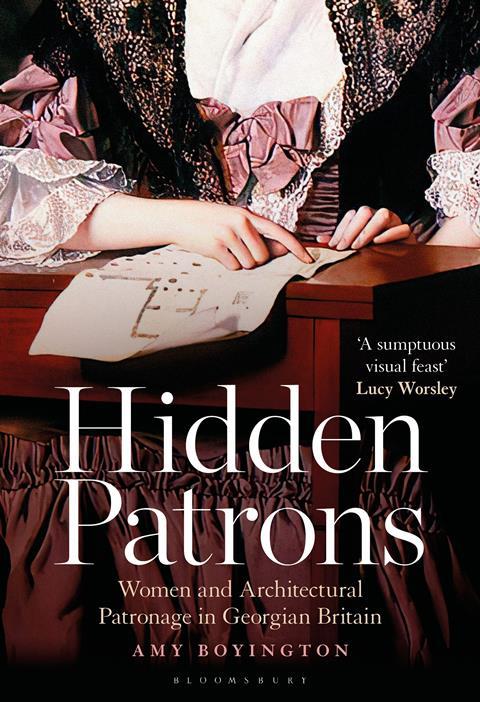Eleanor Jolliffe discovers how a generation of Georgian women pioneers acted as both patrons and architects

Amy Boyington’s Hidden Patrons is a history of architectural practice hidden in plain sight. Her eminently readable book tells the story of the female architectural patrons of Georgian Britain. It doesn’t take many pages though to see that many of these women were clients in name only. Many used the social acceptability of architecture as an artistic interest as an excuse to practise architecture - to be an architect - in all but name.
Ethel Charles may have been the first official female architect in the UK (1898), but this book positively bristles with her forebears. As Boyington neatly surmises: “Female patrons could either decide that public opinion was unimportant to them, or they attempted to disguise their ambition as feminine virtue, thus rendering it more palatable”.
It isn’t just description of female patrons Boyington gives though. She tells the story of how architecture allowed a certain freedom to women denied by society more broadly - whether this be in artistic expression, an escape from a difficult marriage, or a socially acceptable venue in which to further their political and social agendas, or run businesses.The women named are not all aristocratic, we also read of courtesans and business women, all engaging with architectural design as a means of building independence.
Structured around different architectural typologies Boyington has scoured estate accounts, social scandals and personal correspondence. It’s fascinating, and easy to dip in and out of. It’s also beautifully illustrated. Hidden Patrons is meticulously researched and where so many could have fallen into the trap of losing the drama and interest of the topic in dry academic prose, Boyington mostly avoids this. If I have one critique it would be that at times this reads like the re-writing of the PhD thesis I know it to have begun life as.
I expected the book to profile just a handful of women, but I was surprised; some sections feel almost list-y. Apparently there was a small legion of women proactively engaging with architecture in the eighteenth century. As, however, is always the case with architecture, these are the stories of people, in this case women, with access to money and power.
In many cases this is the money and power derived from the men in their lives. The independent business women profiled largely also tend to have flourished in areas relating to providing certain forms of entertainment for men. This however, is more a reflection of the eighteenth century than Boyington’s book.
Women didn’t start practising architecture in the Georgian period, they also didn’t stop
Architecture is an expensive art to realise and it is fascinating to see how money and power was leveraged by this group of people with limited social and political power. Architecture is used by these women to further social and political agendas that would have been all but unacceptable for them to engage them in ‘outside the home’. Architecture gives them power.
This perspective makes for an interesting lens through which to consider the grand architecture of this era. Most often we have become used to considering these buildings through the lens of the problematic sources of the wealth that enabled them.
While a topic Boyington doesn’t touch on, it would be an interesting follow up - the tension between the freedom architectural practice gave one group (wealthy women), and the suffering and exploitation of others (largely the enslaved and the poor) that enabled it.
This is the joy of this book though - by beginning to reveal a world of female architectural practice that most of us are unaware of, it opens the door to further study, exploration and discussion about the nuances of the situation.
I have never described myself as a ‘female architect’. I am an architect, I am also a woman - I have never felt the need for one to define or prop up the other. However, I have been acutely aware through my practice, and my own research into the history of our profession, of the relative dearth of female practitioners. Boyington’s book will hold a valued place on the very small shelf of books on historic female architects.
I enjoyed these stories of women engaging with the built form precisely because they did it for a variety of reasons, from vanity, to art, to political ambition. Just like their male contemporaries. Eighteenth century women were just people, not Georgette Heyer-like caricatures. Like female architects and clients today, they were practitioners who happened to be women, not women practitioners.
There are clearly many more of these largely untold stories of less conventional practice out there. Aside from gender issues, we should treasure any scholarship that reveals more diversity in practising architecture.
Our official histories tell an artificially narrow story, and it’s led to a dangerously narrow profession. We need more of these stories to be told. I hope this book will become one of many; women didn’t start practising architecture in the Georgian period, they also didn’t stop.
Postscript
Hidden Patrons by Amy Boyinton is published by Bloomsbury
















No comments yet